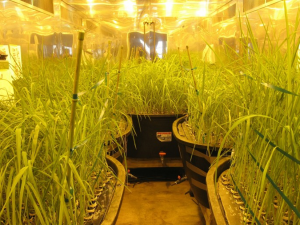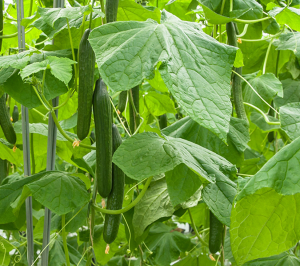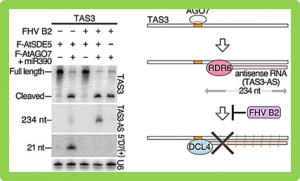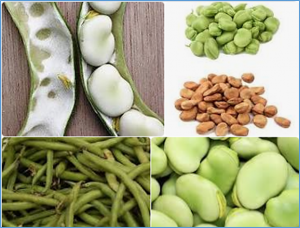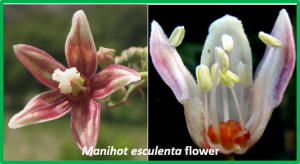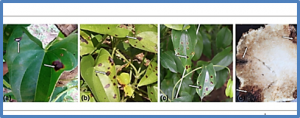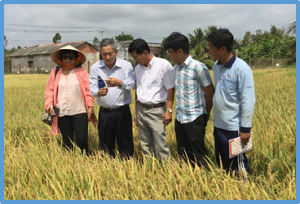Understanding the genetic basis of mineral nutrient acquisition is key to fully describing how terrestrial organisms interact with the non-living environment. Rice (Oryza sativa L.) serves both as a model organism for genetic studies and as an important component of the global food system. Studies in rice ionomics have primarily focused on above ground tissues evaluated from field-grown plants. Here, we describe a comprehensive study of the genetic basis of the rice ionome in both roots and shoots of 6-week-old rice plants for 20 elements using a controlled hydroponics growth system.
Both Soybean mosaic virus (SMV) and Bean common mosaic virus (BCMV) can induce soybean mosaic diseases, but few studies have explored soybean resistance against BCMV so far. In this study, V94-5152, a soybean variant resistant to BCMV and SMV, was crossed with a susceptible cultivar, Williams 82 to map the resistance gene. By inoculating 292 F2 individuals with a BCMV isolate HZZB011, a segregation ratio of 3 resistant: 1 susceptible was observed, suggesting that V94-5152 possesses a single-dominant resistance gene against BCMV-HZZB011.
Marker genotypes are generally called as discrete values: homozygous versus heterozygous in the case of diploids, or an integer allele dosage in the case of polyploids. Software for linkage map construction and/or QTL analysis usually relies on such discrete genotypes. However, it may not always be possible, or desirable, to assign definite values to genotype observations in the presence of uncertainty in the genotype calling. Here, we present an approach that uses probabilistic marker dosages for linkage map construction in polyploids. We compare our method to an approach based on discrete dosages, using simulated SNP array and sequence reads data with varying levels of data quality.
Fruit length is an important horticultural trait for both fruit yield and quality of cucumber (Cucumis sativus L.). Knowledge on the molecular regulation of fruit elongation in cucumber is very limited. In this study, we identified and characterized a cucumber short fruit3 (sf3) mutant. Histological examination indicated that the shorter fruit in the mutant was due to reduced cell numbers. Genetic analysis revealed that the phenotype of the sf3 mutant was controlled by a single gene with semi-dominant inheritance.
Secondary small interfering RNA (siRNA) production, triggered by primary small RNA targeting, is critical for proper development and antiviral defense in many organisms. RNA-dependent RNA polymerase (RDR) is a key factor in this pathway. However, how RDR specifically converts the targets of primary small RNAs into double-stranded RNA (dsRNA) intermediates remains unclear.
Powdery mildew, caused by Podosphaera pannosa, is one of the most serious and widespread fungal diseases for roses, especially in greenhouse-grown cut roses. It has been shown that certain MLO genes are involved in powdery mildew susceptibility and that loss of function in these genes in various crops leads to broad-spectrum, long-lasting resistance against this fungal disease.
In partially allogamous crops such as faba bean (Vicia faba L.), increasing the share of heterosis in a synthetic cultivar can improve yield and yield stability. The share of heterosis in such synthetic cultivars is increased by higher degrees of cross-fertilization. This trait is defined as percentage of cross-fertilized seeds among all seeds and is a crucial parameter in breeders’ yield predictions. Current approaches use degree of cross-fertilization to predict inbreeding and share of heterosis, they even consider genotype-specific degrees; yet, all genotypes are assumed to contribute equally to the cross-fertilized seeds.
This paper reviews and analyzes key features from cassava breeding at the International Center for Tropical Agriculture (CIAT) over 50 years and draws lessons for public breeding efforts broadly. The breeding team, jointly with national program partners and the private processing sector, defined breeding objectives and guiding business plans. These have evolved through the decades and currently focus on four global product profiles.
Yam (Dioscorea spp.) anthracnose, caused by Colletotrichum alatae, is the most devastating fungal disease of yam in West Africa, leading to 50%–90% of tuber yield losses in severe cases. In some instances, plants die without producing any tubers or each shoot may produce several small tubers before it dies if the disease strikes early. C. alatae affects all parts of the yam plant at all stages of development, including leaves, stems, tubers, and seeds of yams, and it is highly prevalent in the yam belt region and other yam-producing countries in the world. Traditional methods adopted by farmers to control the disease have not been very successful. Fungicides have also failed to provide long-lasting control.
Heat events during the reproductive stages of rice plants induce great yield losses. Cultivating heat-tolerant varieties is a promising strategy for guaranteeing grain security under global warming scenarios. Most heat-tolerant rice genotypes were identified under heat during the flowering stage, but it is unclear whether these currently screened heat-tolerant rice genotypes maintain stable high grain yields when heat stress occurs during the other reproductive stages. In the present study, two notable heat-tolerant rice cultivars, Nagina22 and Shanyou63, and one typical heat-sensitive cultivar, Liangyoupeijiu, were evaluated for their yield response and yield stability under heat treatments during the panicle initiation, flowering, and grain filling stages during 2010-2014.


 Curently online :
Curently online :
 Total visitors :
Total visitors :
